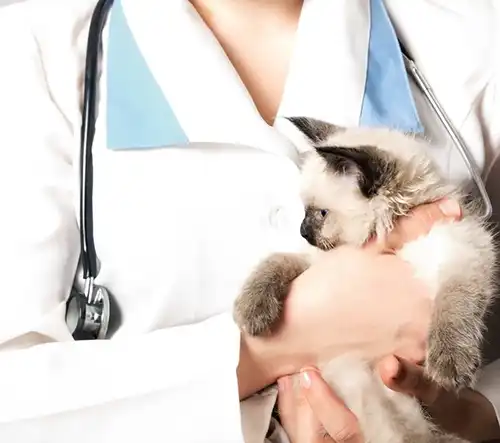Did you know that approximately one percent of our four-legged pals develop diabetes at some point in their lives? Diabetes is not as frequent in pets as in humans, but it is not unusual. This post by a local San Rafael, CA veterinarian covers some basic facts regarding diabetes in pets.
What Is the Definition of Diabetes Mellitus?
Diabetes is roughly the same in humans and animals. It is a condition caused by the pet’s body’s inability to effectively process glucose, which is required for fuel. This is where insulin comes in. Insulin regulates the mechanism by which glucose is transformed into fuel. To put it another way, insulin controls the physiological process that converts Fido’s favorite dog treat into a round of zoomies and happy dances. When that goes wrong, it causes havoc in your pet’s body.
Diabetes is classified into two types. Type 1 diabetes is caused by the body’s inability to manufacture insulin. This is frequently the result of pancreatic damage or malfunctioning. If Fido develops this type of diabetes, he will need insulin shots on a daily basis. This is the most common variety for our canine friends. Type 2 diabetes is defined by the body’s inability to adequately utilize insulin. In rare situations, the pup’s pancreas generates insulin, but it is insufficient or the cells are unable to effectively digest it. This is particularly common in overweight or geriatric dogs. It is also the most prevalent kind found in cats.
Regardless of what the pet ate, both sorts eventually cause the body to go hungry for energy. The illness also causes a buildup of sugar in the bloodstream, despite the fact that the cells require glucose. The body will then begin to process fat and protein. This can lead to serious organ damage.
For more information, consult with your San Rafael, CA veterinarian.
What Are the Health Risks Associated With Diabetes?
Diabetes can create a number of secondary health issues, some of which are life-threatening. Cataracts, liver difficulties, kidney disorders, and seizures are just a few examples. Then there’s ketoacidosis, which is very hazardous. When the body is actually starving for sustenance, regardless of the amount of glucose in the blood, it begins to break down fat and protein. This results in ketones. You’ve definitely heard the term ‘ketosis’ a lot, because it is the foundation of the keto diet. While low levels of ketone bodies in the blood are acceptable, higher levels are not. In reality, they can cause havoc in the body, resulting in a chain reaction of negative outcomes. They make the blood more acidic, which disrupts the electrolyte balance. This results in dehydration. As the illness worsens, it may result in brain cell enlargement, organ failure, and impaired muscle function. Ketoacidosis can be fatal if left untreated, thus this is a severe matter.
For more particular information, consult your San Rafael, CA vet.
What Are the Risk Factors For Diabetes in Pets?
Diabetes can affect pets at any age. Having said that, there are several clear risk factors. Breed is one example. Diabetes can affect any pet, but certain breeds are more likely to develop it. Many of the smallest breeds of dogs are particularly vulnerable. The Dachshund, Poodle, Cocker Spaniel, Bichons Frise, Miniature Schnauzer, Labrador Retriever, Pomeranian, Keeshond, and Samoyed are among the breeds on this list. For kitties, the Tonkinese, Norwegian Forest, and Burmese cats are also at high risk.
Of course, because obesity is such a risk factor, any pet who is obese is in danger.
- Obesity
- Pregnancy
- Pancreas disease
- Hypothyroidism
- Kidney disease
- Dental Disease
- UTIs
- Skin inflammation
- Using steroids
Amyloidosis would increase the dangers for cats as well. Canine hypothyroidism, kidney illness, and Cushing’s disease are all risk factors.
How Should I Care for a Diabetic Pet?
Fido and Fluffy would most likely require lifelong therapy if they are diagnosed with diabetes. However, there is no reason to be alarmed. In many circumstances, caring for a diabetic pet will not differ significantly from caring for any other pet. In certain situations, the condition may even be reversed, though there are no promises.
After fully examining your pet, your veterinarian will be able to discuss particular treatment alternatives. These might include the following:
Insulin injections While insulin injections may seem scary at first, they are actually pretty easy. Once you and your pet are used to the routine, it should only take a few minutes per day.
Medication: Certain drugs may help to regulate blood sugar.
Nutrition: Your pet’s nutrition is critical to their overall health. You should provide your dog or cat with a high-quality brand that is low in carbs. Portion management is also important. Even giving your pet a few extra calories each day might cause weight gain.
It’s also crucial to understand what foods to avoid feeding a diabetic pet. Get into the habit of reading labels. Anything containing corn syrup is an instant no. Sugar and honey-based products are likewise not recommended. In addition, you should limit Fido’s intake of fatty foods like peanut butter.
Glucose Monitoring: You will also need to test your pet’s blood, urine, or both on a regular basis. This is quite easy, once you are used to it.
Keeping An Eye Out For Symptoms: Keep an eye out for indications of hypoglycemia and diabetic ketoacidosis. Some of these include weakness or lethargy, tremors, seizures, uncoordinated movements or walking weirdly, sweet-smelling breath, acting quieter than normal, unwillingness to eat or drink, vomiting, diarrhea, disturbed or quick breathing, cataracts, high blood pressure, and urinary tract infections. If you detect any of these issues, contact your veterinarian immediately.
Veterinary Care: Pets with diabetes may need to come in more frequently, especially if they have additional health conditions. Follow your veterinarian’s appointment schedule.
Contact Our San Rafael, CA Animal Clinic
Are you looking for a good veterinarian in the area? Do you need to take your dog or cat in for a checkup? Contact us, your local San Rafael, CA animal clinic, right now!







!Social Media Icons